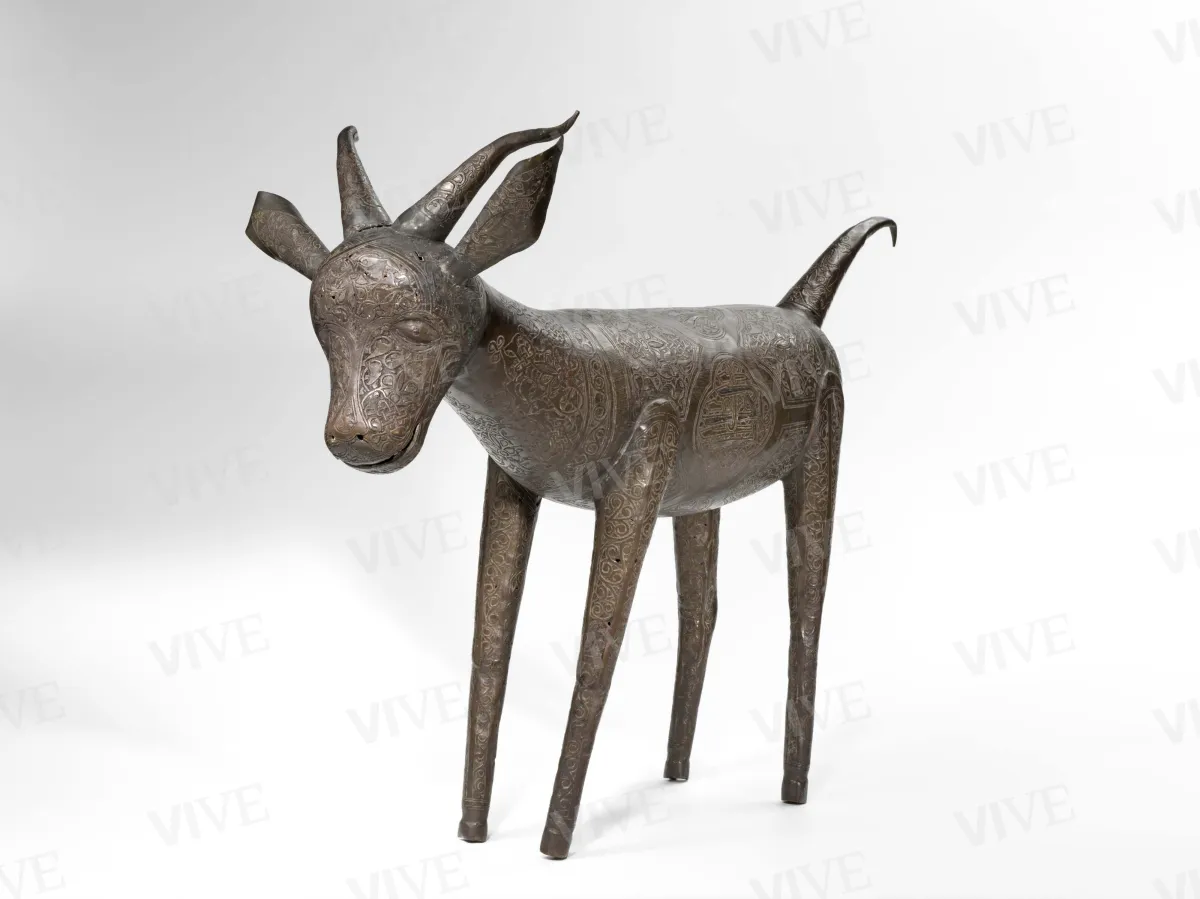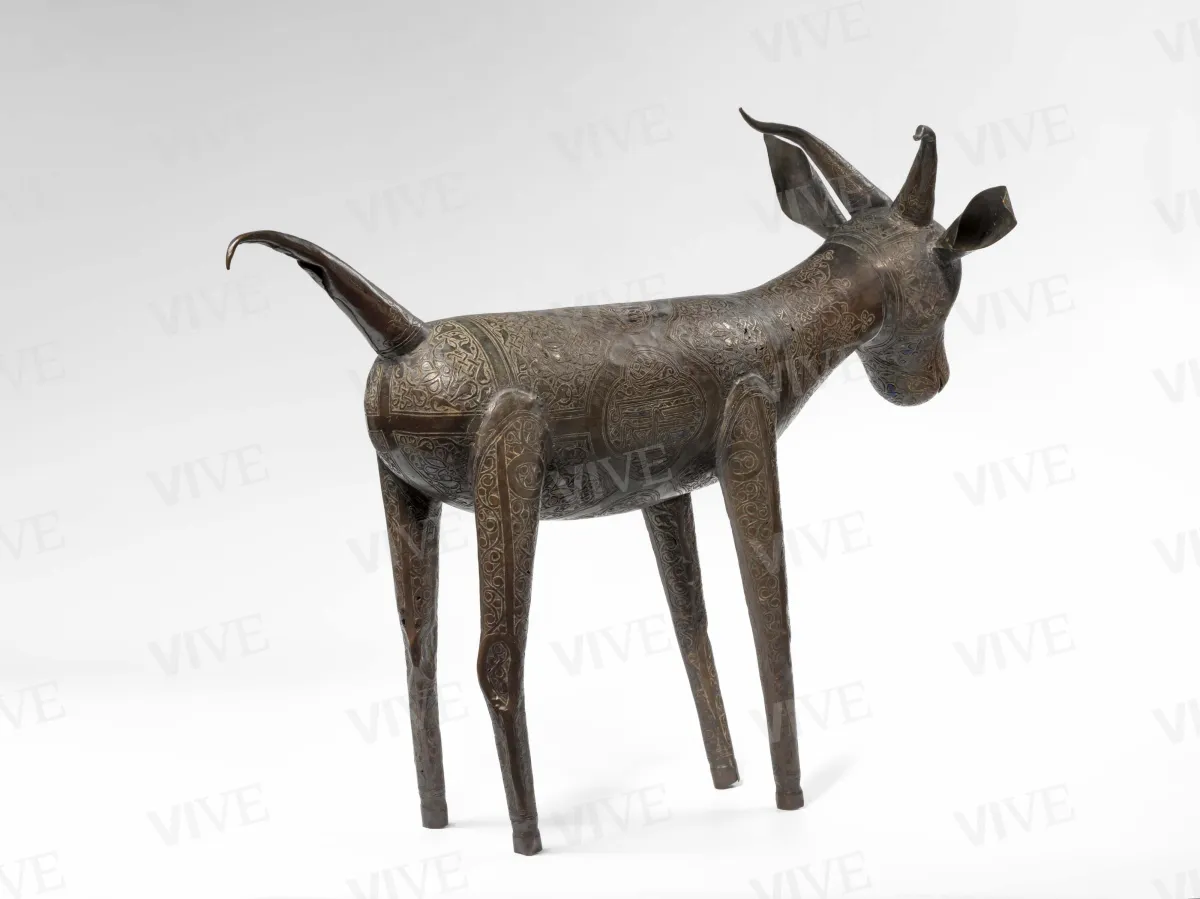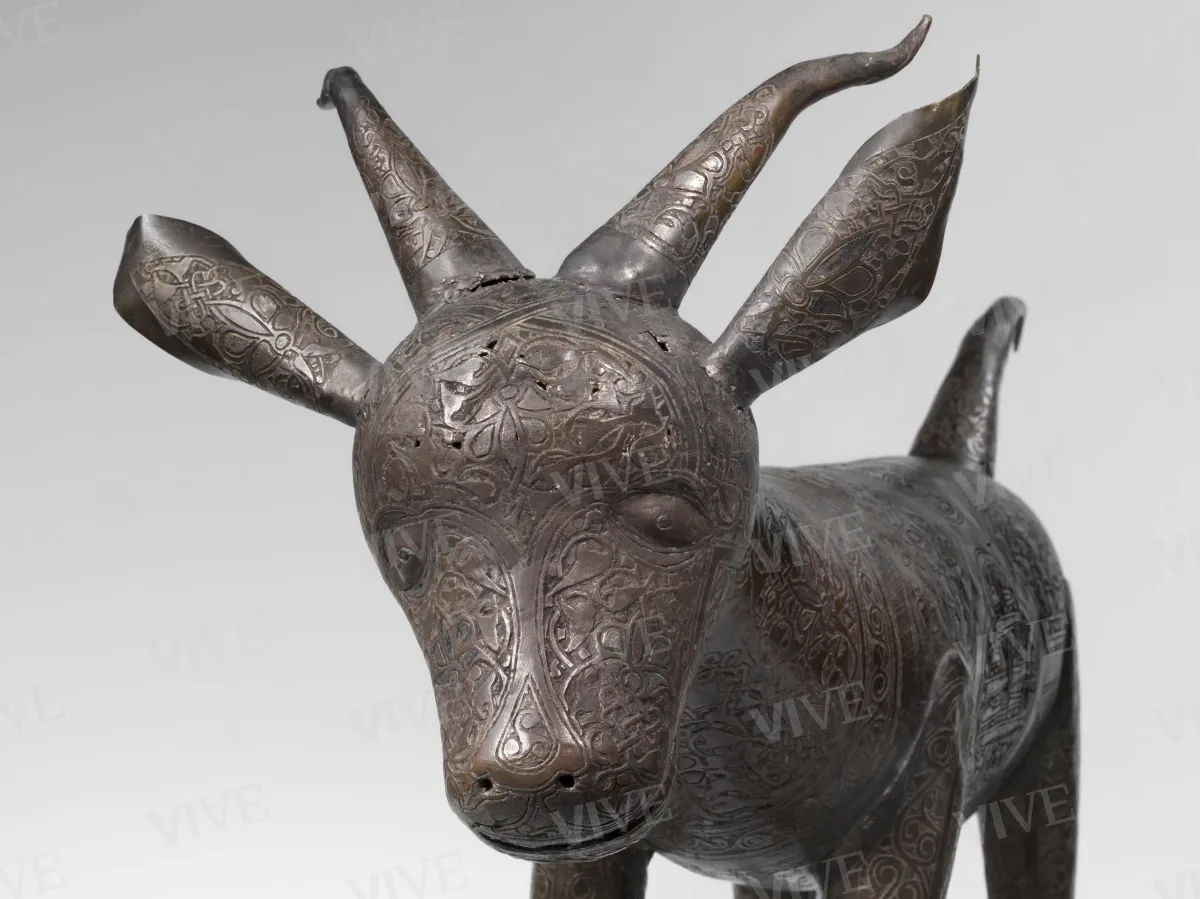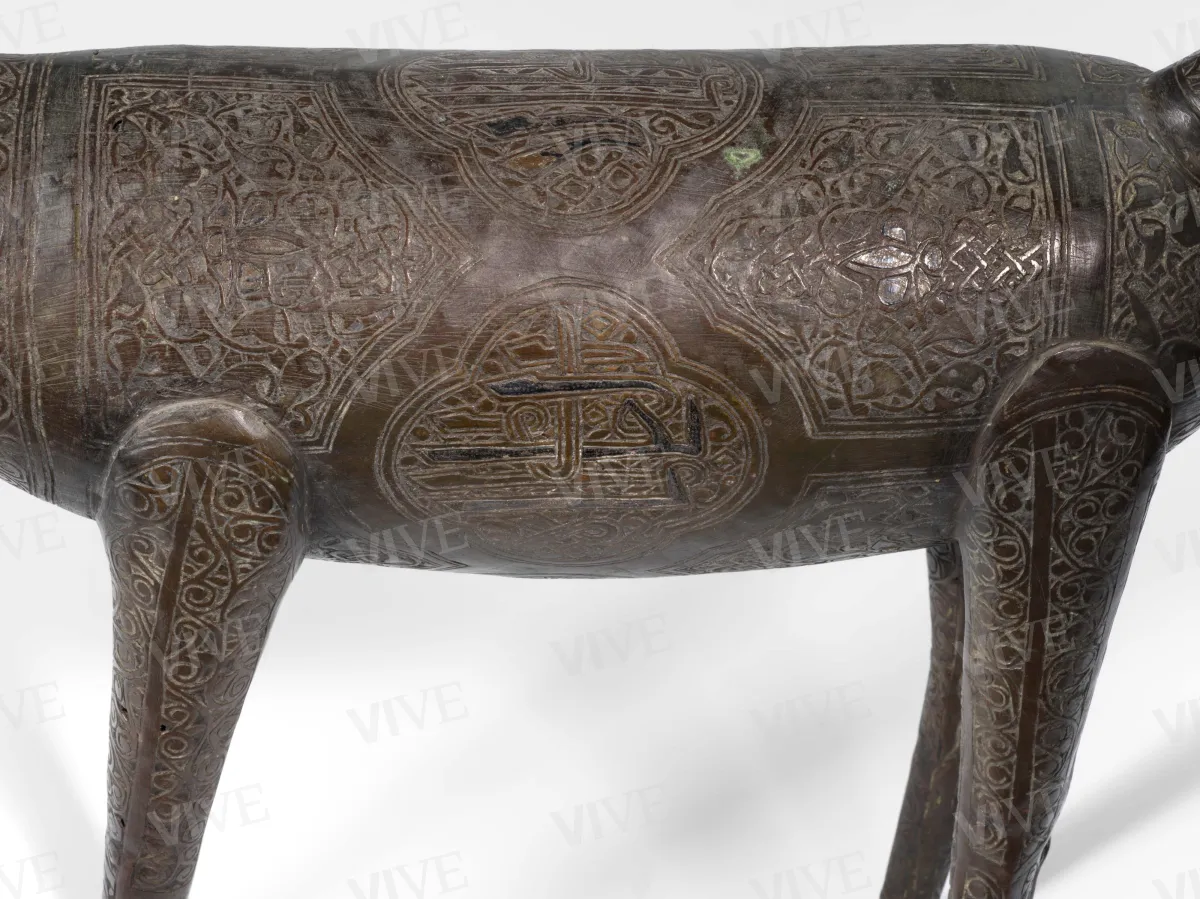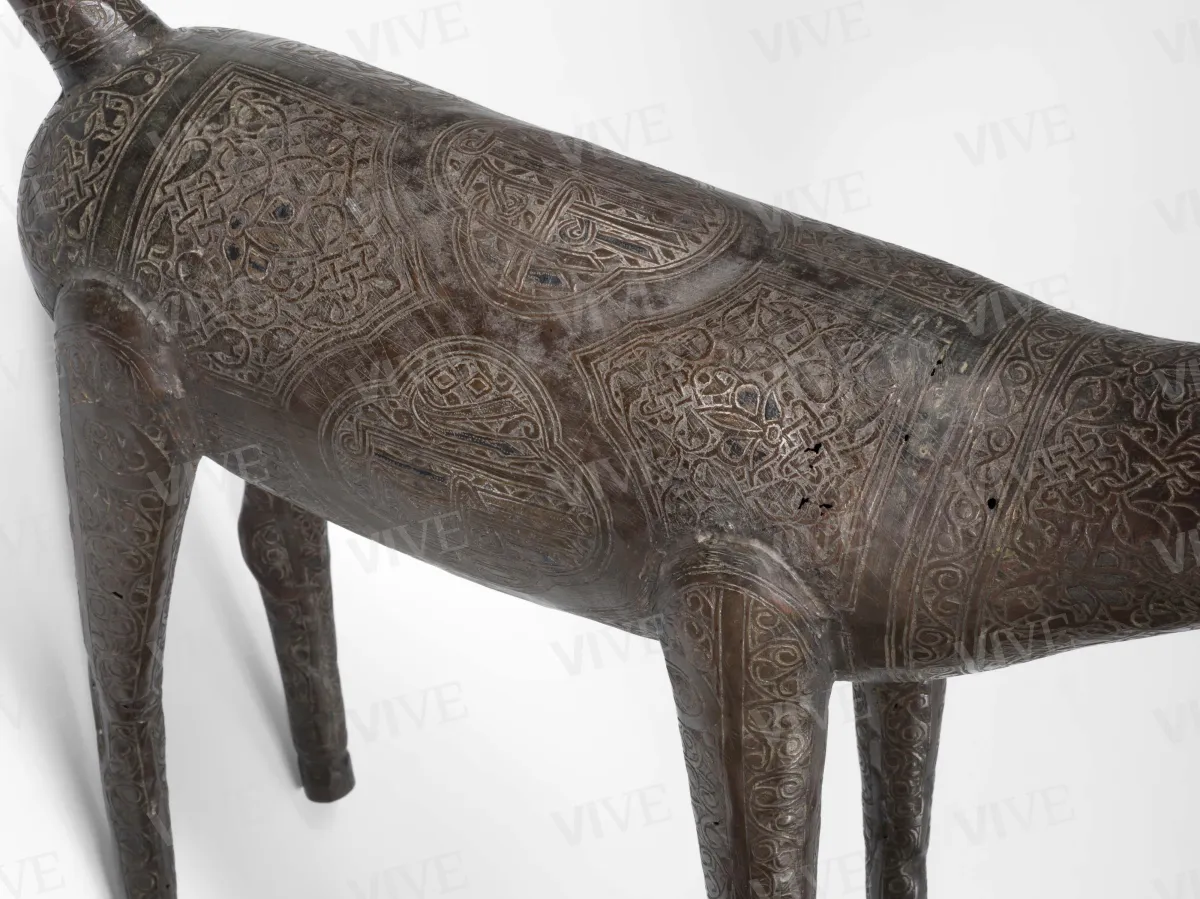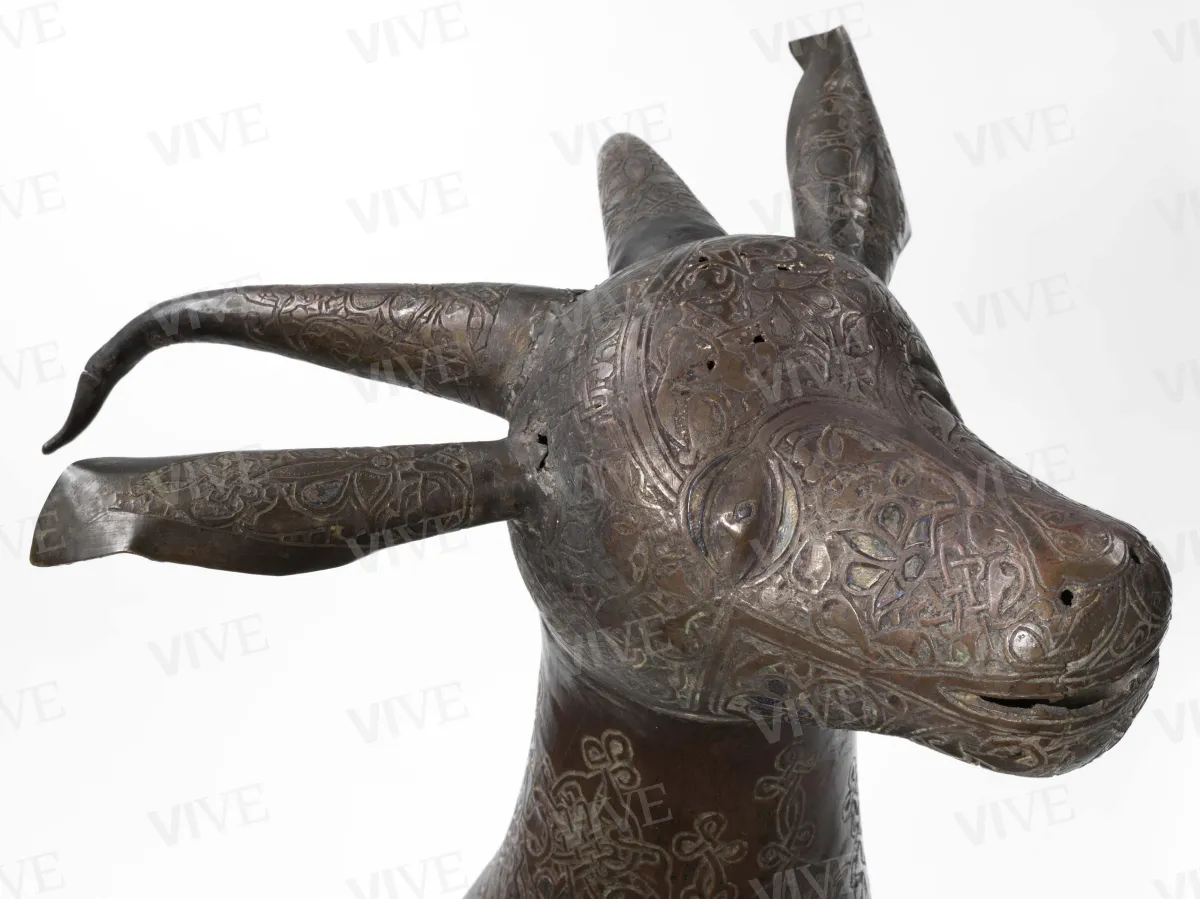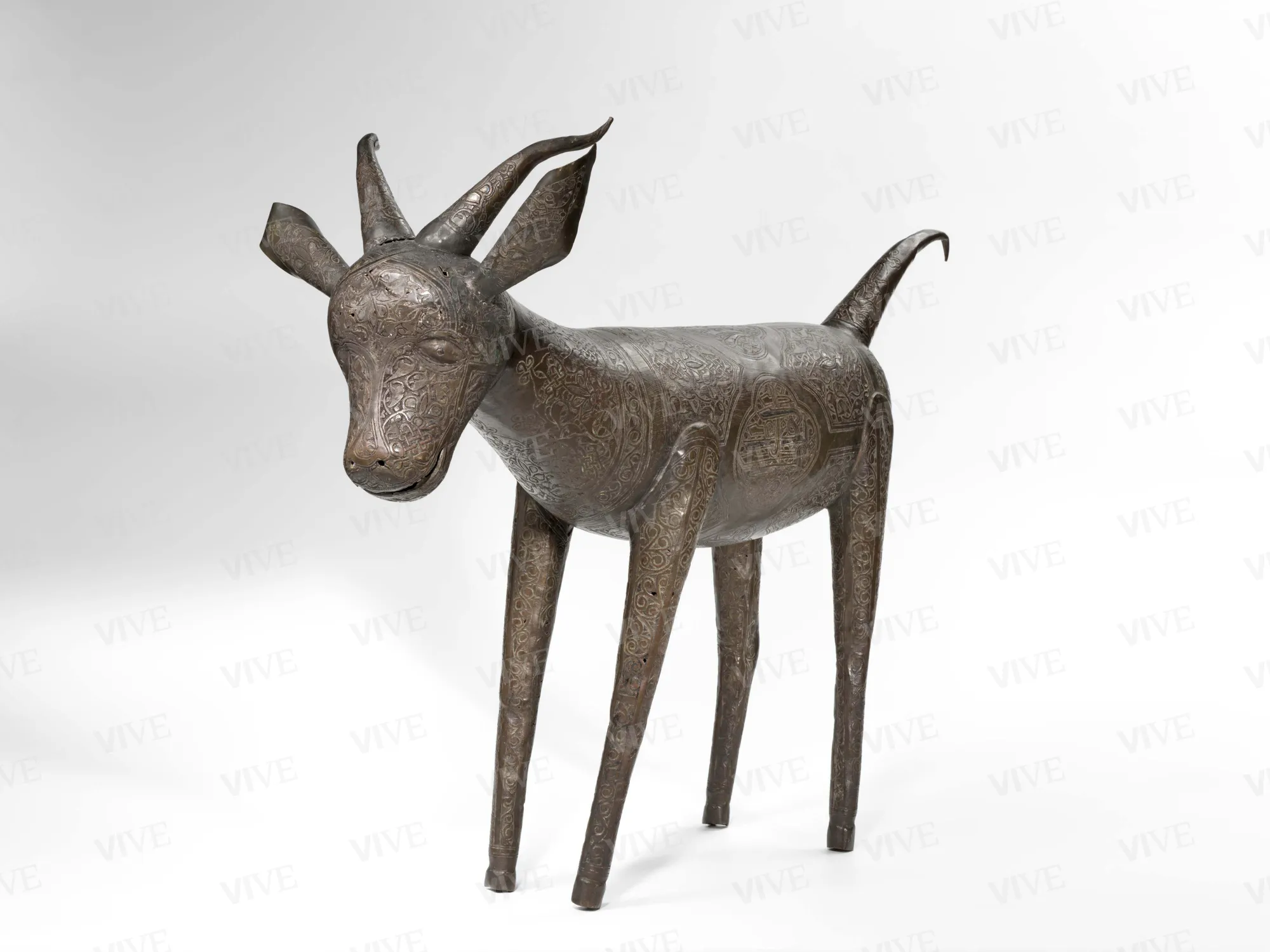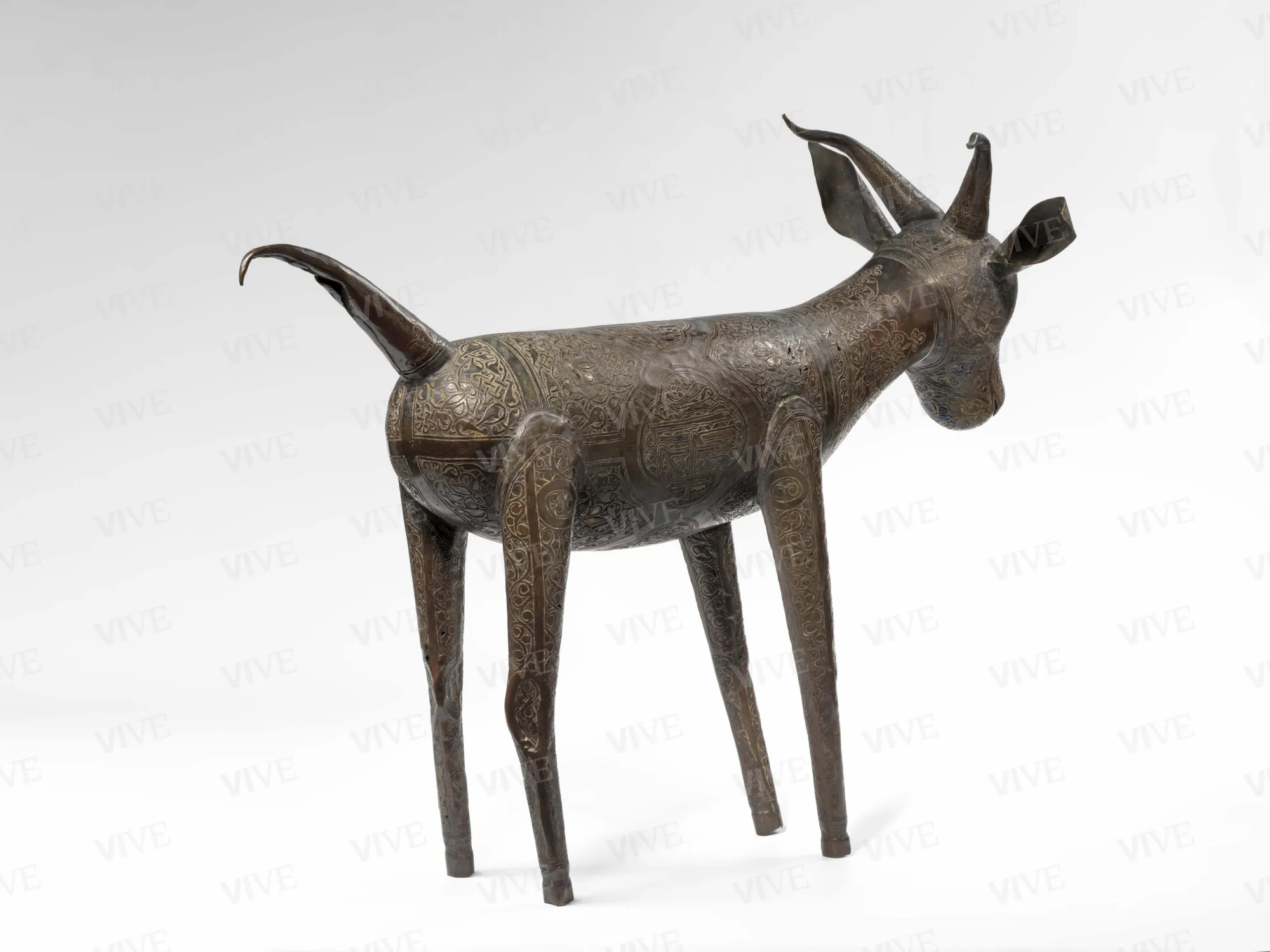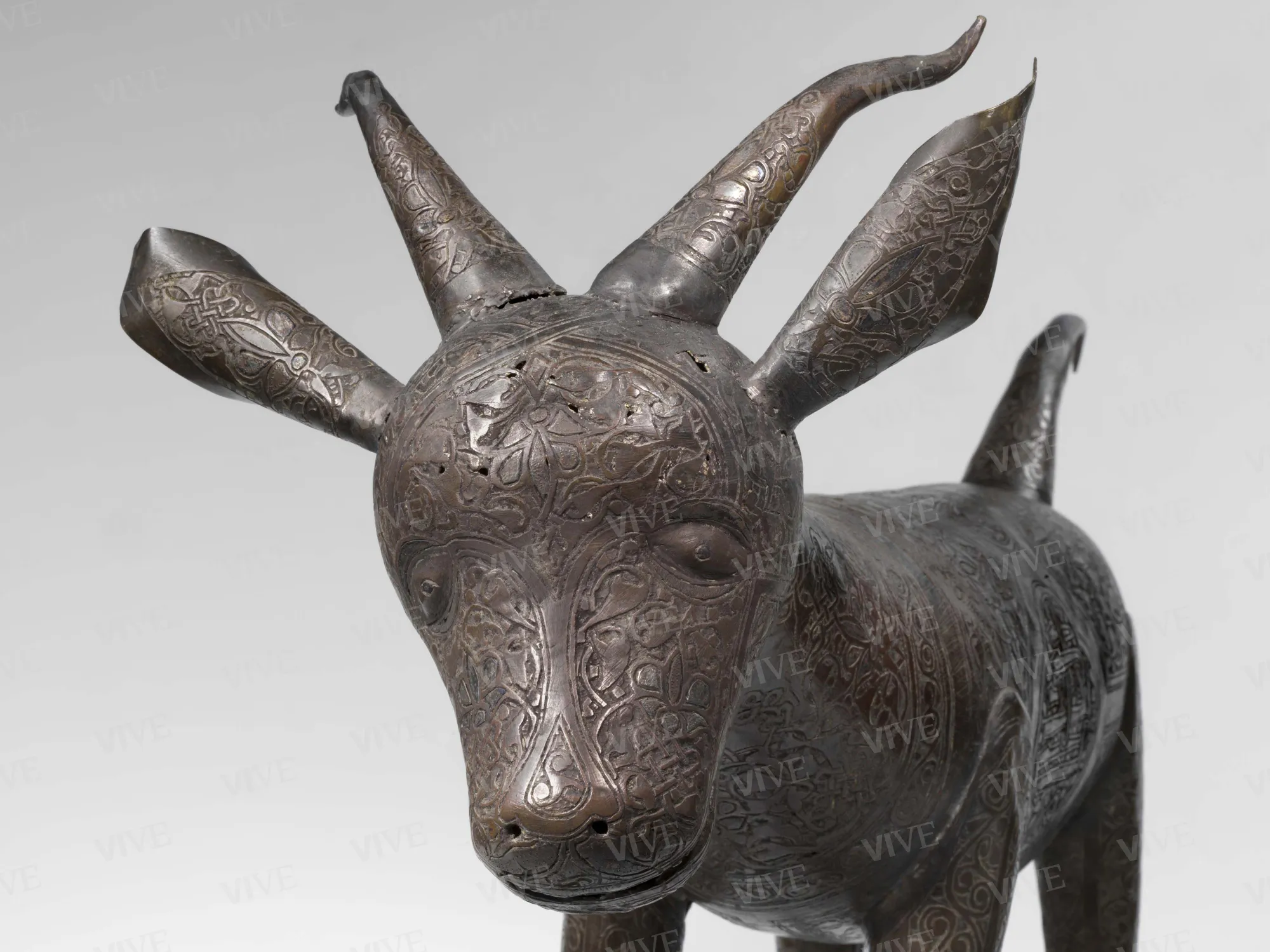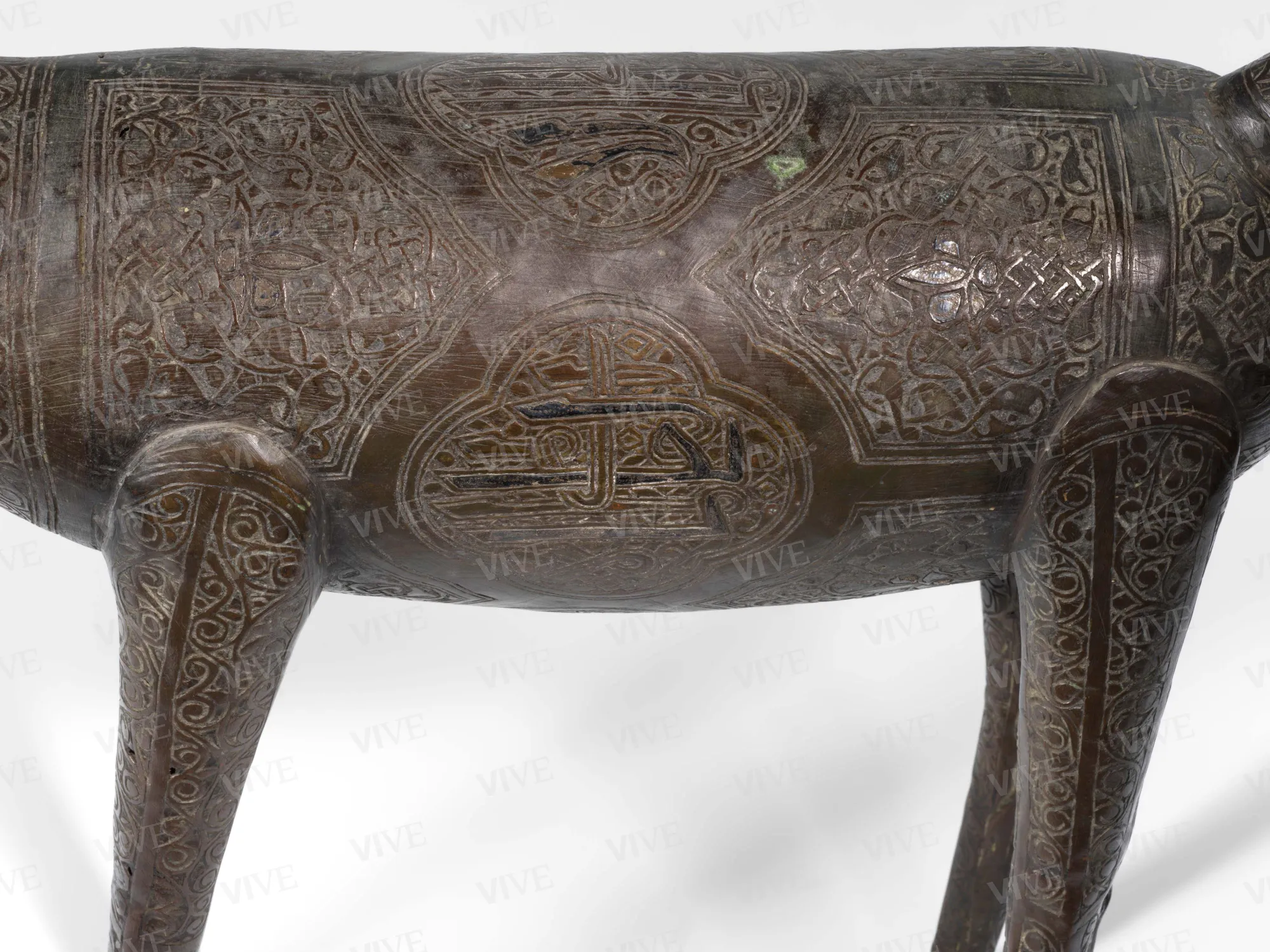Bronze goat
Anonymous 15th century
Bronze goat statue, standing on four highly stylized legs applied to the body made by shaping a metal foil into a tubular form. The legs are also made from tubular foils and welded—as are also the head, horns, and ears—to the object. The entire surface is decorated with plant whorls, declining into lanceolate palmettes, Solomon's knots, and stylized peonies with traces of silver damascening (obtained by application and using bitumen). Two cartouches on the animal’s belly bear an inscription containing an invocation.
Bronze goat statue, standing on four highly stylized legs applied to the body made by shaping a metal foil into a tubular form. The legs are also made from tubular foils and welded—as are also the head, horns, and ears—to the object. The entire surface is decorated with plant whorls, declining into lanceolate palmettes, Solomon's knots, and stylized peonies with traces of silver damascening (obtained by application and using bitumen). Two cartouches on the animal’s belly bear an inscription containing an invocation.
Details of work
Catalog entry
This zoomorphic figurine is rather atypical in the context of medieval Islamic metalwork. Although it bears some similarities with comparable objects of Egyptian and Andalusian production, it does not perfectly correspond to these. If anything, they are closer to typical fourteenth–fifteenth-century Mamluk metalwork decorations. The swirl motifs with lanceolate palmettes and peonies are characteristic of Egyptian art, and the inscription depicted on the belly of the animal confirms this etymology. The epigraphic apparatus is highly enigmatic in character (in the first part the word "al-'Alimi,” the wise man, is written with one letter too many; thus the continuation of the inscription "al-ma' " [sic] is difficult to decipher).
Michele Bernardini
State of conservation
Good. Much of the silver encrustation has been lost and only a few traces remain.
Inscriptions
"العلى مي المل";
"al-'ali- (sic) mī al-malā" (The wise man al-malā).
Provenance
Casa d’aste Ciardiello, 1946 sale.
Sources and documents
OA report held in the museum.

